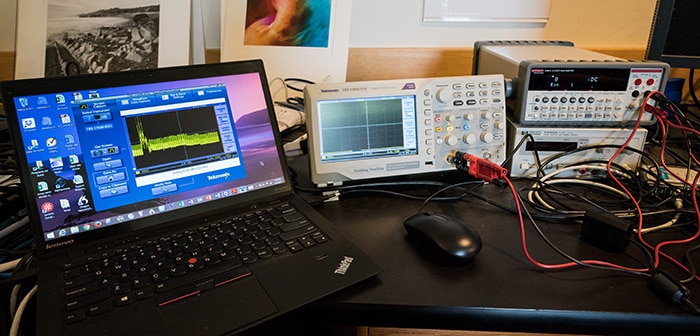This is the 23rd in a series of posts on the Sony a9. The series starts here.
In this post, I tested a fairly severe a9 use case and found:
- A rise over ambient looked like it was going to get to about 17 or 18 degrees C above ambient.
- A time constant of about half an hour.
From yesterday’s testing, it is apparent that the average dc current with the tested use case was about 850 ma. There are shooting scenarios that produce higher average currents. The worst one I’ve found is 20 fps ES shooting. However, that is not sustainable, because once the buffer is full, the frame rate drops to about 2 fps with a 150 MB/s SD card. I haven’t tested Sony’s fastest card — and I will as soon as I can get my hands on it, but up to 150 MB/s, write power is a very weak function of write rate.
And then there’s AF and IBIS, which both increase current drain, but not by much.
I’m going to throw all that together and guess that IBIS/OSS and AF could conspire to raise the sustainable current draw to one amp. That means that we could conceivably see a 21 degree C rise over ambient. I son’t know the shutoff temperature, either in Standard or High mode, so I can’t say what ambient temperature would cause the camera to shut down with a one amp draw for a long time.
I will say that the a9 can consume more power, and therefore generate more heat, than, say, an a7RII. It looks to me that the a9 is only marginally better at getting rid of that heat than the a7RII. Assuming the shutoff temps in the two cameras are similar, the a9 will shut down with less provocation than an a7RII.
Solar heating undoubtedly plays a big part in many use scenarios, and is difficult to factor in.
To me, it’s surprising that the a9 manages to go so much faster than the a7RII and consume so little extra power.

Andrew says
I would imagine the effect of of solar heating could be quite significant. I live 1794m above sea level and 24 degrees from the equator and had a Samsung that would shut down in less than a minute shooting outdoors in summer. I was using manual lenses and found stopping them down to the narrowest aperture between shots would help immesley which pointed to the problem being solar radiation. I suspect this could be leading to some of the conflicting reports on overheating.